About Genetta
| Comparable Breeds | Bengal, Munchkin |
| Temerament | Active, playful, social, affectionate, energetic, friendly, alert, smart |
| Best Suited For | Cat loving families and singles who have the time to devote to an intelligent, active, and attention-seeking pet |
| Lifespan | 12-16 years |
| Physique | Lean, muscular |
| Weight | 4-8 lbs |
| Height | 4-12 inches |
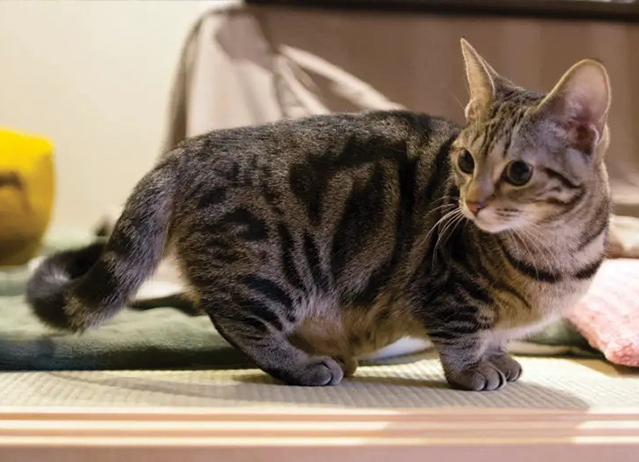
Genetta Breed History
The Genetta is a new cat breed developed by Pawstruk Cattery. It is a dwarf variety bred to have short legs and marbled or spotted fur. Its coat pattern makes this tiny feline look like a spotted African Genet.
In 2006, Shannon Kiley began developing this unique breed to produce a new kind of domestic cat that would appeal to many exotic animal lovers who wanted to have genets but couldn’t have them for one reason or another. The first litter of Genetta kittens was born on December 13th, 2006 after she had spent time choosing which cats should be the founding members of the newly established breed.
While the Genetta Cat possesses wild Genet-like features, it is a domesticated feline and not at all related to any genets. Savannahs were crossed with SBT Bengal cats as well as Munchkins to develop these breeds. Nevertheless, there might be Asian Leopard or Oriental Shorthair lineages integrated into this breed, in addition to Ocicat or Serval lineages in future times.
Today, TICA (The International Cat Association) has yet to register Genetta though work regarding its registration is underway among its breeders. Eventually, they hope it will be recognized as an official breed by major cat registries globally.
This cat is a dwarf breed that has been bred to feature small legs and marbled or spotted fur.
Breed Traits
Genettas are very lively, playful, and friendly cats. They are always up and moving about, and some will even play catch. They are friendly, therefore, they serve as great family pets and they can also befriend other animals, especially dogs.
These playful and clever cats thrive on human interaction and constant attention. They are company-looking and so they must not be left alone for a long time. Genetta cats are known for their flexibility and elegance, which help them in hunting and steer their environment.
These cats are naturally strange, often exploring their surroundings with interest and warmth.
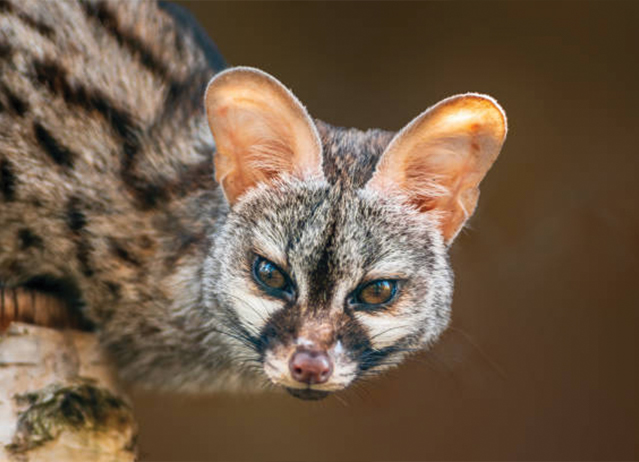
Overall Description
The Munchkin is quite often used as the foundation for the Genetta Cat, nevertheless, these cats can have long or short legs. In one litter, some might be long-legged and others short-legged, but the short-legged cats have always been the ideal ones for the breed whereas the long-legged cats have been “non-standard.”
A cat named “Long-legged” or “Non-standard” Genetta closely resembles a Bengal that is used to breed the Genetta. Ensuring cats are more diverse even with the cat’s issues is what all of them are anticipating in further developments of Genetta with the Genetta being developed further though none of these beginning are looking like a Bengal in body type.
The head of this Cat will be longer than it is broad, and it will form a small wedge shape, with the skull curving past the cat’s ears to elongate the appearance of the neck. The ears are large and quite rounded, and the tip of the ear that is going to be very soft should only be a little bit smaller than the ear base. The eyes must be big and have a slight slant, while the chin should mainly be weak, along with a wide and large nose and a long and slender neck.
The tail of a Genetta that is quite thick in its rear has typically the look of a puff which is also because the tail is covered with fur, and it should be long (preferably longer than the body). The feet are oval and small, and the body, which can be described as long and tubular, should have long, firm, and toned muscles. This will result in a very physically and physically slow-moving impression that can be summarized as resembling weasels.
Colors
A Genetta Cat may come in different coats. These are typically snowy spotted, silvery, brown, and black. In addition to these, you could also come across a Genetta in the marbled color code of brown and cocoa, silver, cinnamon, and black as well as snow. Furthermore, Calico, torbie, and white patches are seen as disfavored for this breed.
The Genetta cat can have different eye colors. It can have green, amber, or dark brown of the eyes.
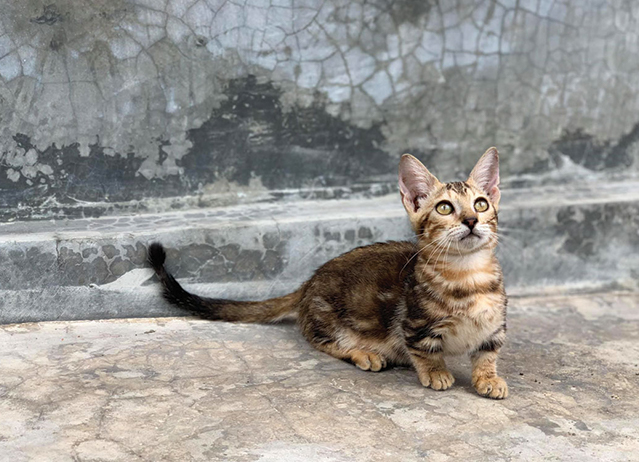
Grooming Requirements
If you are a person who is in search of a feline breed that doesn’t shed much, it would be wise for you to check the Genetta breed as these little friends will shed the least. Those cats that have the largest percentage of the Bengal breed in their genealogical line rather than other lineage breeds, are the ones that will shed the least, thus, they will develop a pelt-like, slick, and tight coat.
Looking over the Genetta cat as a whole, as an animal, the grooming requirements are minimized to a great extent. They need nothing more than combing away the dead hair once a week, and maybe a little petting while you bond with your best pal.
Common Health Problems
At this moment, no potential health problems have been reported, but the ethical problems of Genetta breeding can raise some health problems. Additionally, it’s safe to assume that the health problems of the Genetta are a mix of so many breeds of nature.
Spinal Problems
Even though munchkins are generally healthy, they are prone to lordosis which is a rare kind of spine ailment whereby the spine muscles don’t grow to their usual length. Which causes the spine to ‘subside slightly’, and bend his body.
Symptoms can range from mild to severe. If it’s very bad, their spine squeezes to the point of paralysis, and death occurs.
Hypertrophic cardiomyopathy
On the Bengal side first on the list is the heart ailment that occurs very often in Bengal cats and in this way, it means that some of the Genetta cat breeds obtain one or more conditions.
The most encountered heart condition is hypertrophic cardiomyopathy, which is caused by the thickening of the inner muscle tissue of the heart, and consequently, the blood flow is broken up which further affects the heart operation.
In Bengal cats, it is a genetic form of the disease and it leads to an enlargement of the heart (hypertrophy of the heart muscle) that ultimately leads to the cat being incapable of even walking around.
Eye Problems
It’s another illustration of the situation with Bengal. They might develop cloudiness in the lens of their eyes. A second eye problem that Bengals are prone to is Entropion.
This is an extremely painful story where the cat’s eyelids get wrapped out or rolled inward. Treatment has to be done immediately because if it is left untreated, it can lead to the complete loss of vision.
Progressive retinal atrophy is an inherited disease that does not hurt the eye, and it affects one’s sight. The rods and cones of the cats’ eyes are ants taking care of them that are degenerated by the disease and cause blindness.
Pectus excavatum
Pectus excavatum (concave chest) is a structural malformation of the chest making the chest sunken down and the cat has the appearance of a sinkhole. This malformation is also called a ‘funnel chest’.
It may either be present from the time of birth or arise during the cat’s early life. This problem is of genetic origin and it is more common in munchkin (and probably Genetta cats) than in full-sized cats, but it is not specific to the breed.
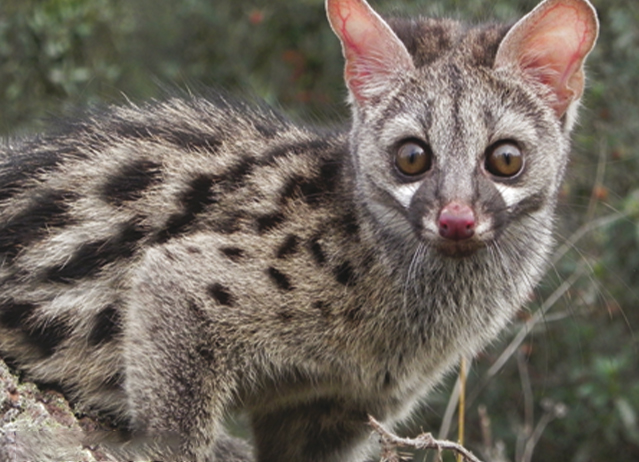
3 Breeds used to create Genetta
1. The Savannah
The Savannah is a hybrid breed itself it is a cross between a serval and domestic Siamese cat, and it is a medium-sized to large cat. It has an exotic pattern on its coat, with black dots and stripes over a white and tan base coat.
2. The Bengal
The Bengal cat is also a hybrid, and well-known for its striking coat that is very similar to the pattern of some wild big cats – to be more specific, it looks like a leopard’s coat. They are the only cat breed that has such rosette patterns and markings. The rosette patterns are visible on the short fur with a brown, silver, or snow color basis.
3. The Munchkin
Official recognition of Munchkin cats happened in the early 90s. They are also known as Dwarf cats, a name that is derived from their short legs – and that’s why they are called small cats. One of the unique features, the one that is unsuitable for most of us, is their very short legs. Other than that, they are standard cats and they live longer and healthier than what was predicted.
Genettas Have Social Personalities
The Genetta cat is usually very active and smart. Genetta’s good points are too broad a list but among them is high adaptability to education.
Genettas love to play with cat toys and it is a joy for them to engage in the play with every family member. They won’t be still at all because they are very energetic and thus will remain loquacious and play for long periods.
By nature, they have a desire to communicate at all times. Separation anxiety in Genettas is common and can be quite an issue. In case a person is not home for a long time, the cat will probably act out by grooming its fur too much and being too noisy.
This cat is very fond of being around people.
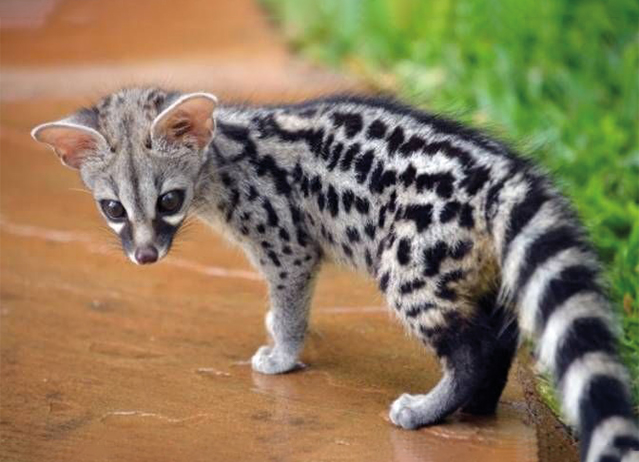
Are Genettas Hypoallergic?
Rest assured that these are easy to take care of when it comes to the grooming process. Their fur is soft and not heavy. However, they are not hypoallergenic. It does, nonetheless, shed but almost no more than on the cat-shedder scale. It is, in basic words, a “low-shedding cat”.
Related: Kanaani

